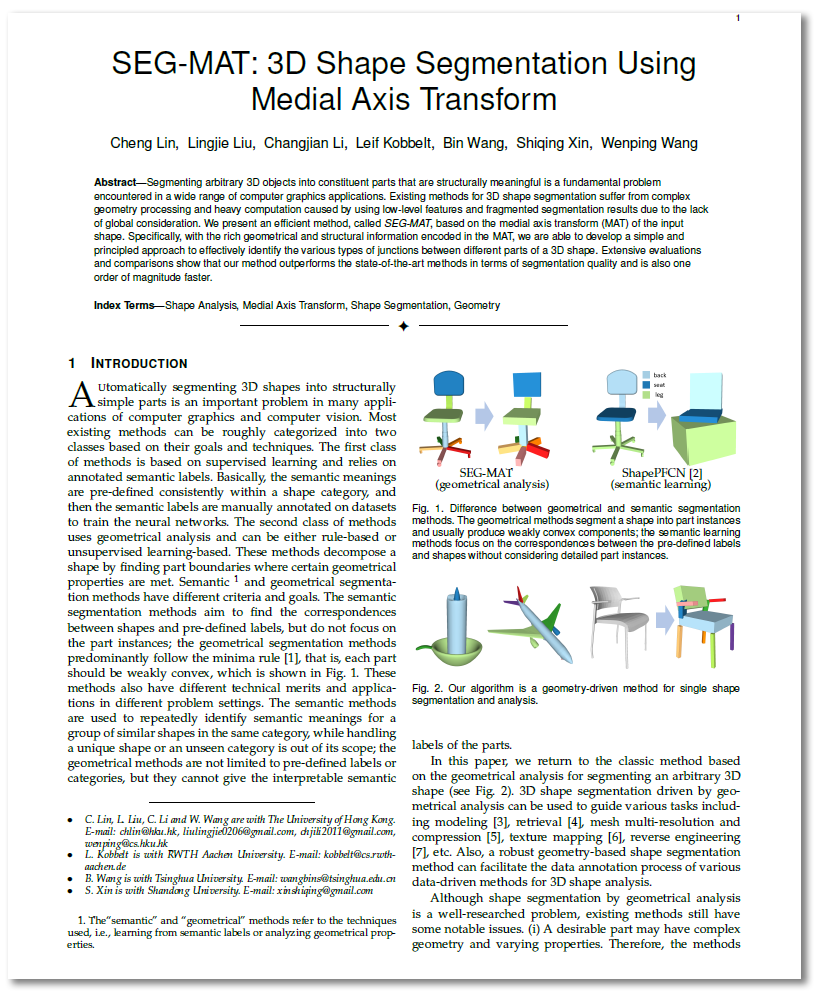| SEG-MAT: 3D Shape Segmentation Using Medial Axis Transform | |||
| Cheng Lin1, Lingjie Liu1, Changjian Li1, Leif Kobbelt2, Bin Wang3, Shiqing Xin4, Wenping Wang1 |
1The University of Hong Kong, 2RWTH Aachen University, 3Tsinghua University, 4Shandnong University |
||
| IEEE Visualization and Computer Graphics (TVCG), 2020 | |||
 |
|||
| Fig. 1. SEG-MAT is a geometry-driven method for single shape segmentation and analysis. | |||
| Abstract | |||
| Segmenting arbitrary 3D objects into constituent parts that are structurally meaningful is a fundamental problem encountered in a wide range of computer graphics applications. Existing methods for 3D shape segmentation suffer from complex geometry processing and heavy computation caused by using low-level features and fragmented segmentation results due to the lack of global consideration. We present an efficient method, called SEG-MAT, based on the medial axis transform (MAT) of the input shape. Specifically, with the rich geometrical and structural information encoded in the MAT, we are able to develop a simple and principled approach to effectively identify the various types of junctions between different parts of a 3D shape. Extensive evaluations and comparisons show that our method outperforms the state-of-the-art methods in terms of segmentation quality and is also one order of magnitude faster. | |||
|
|||
|
|
|||
| Results | |||
| Result Gallery | |||
| We show our segmentation results for a variety of 3D shapes in Fig. 2. We use the same parameter settings for shapes of different categories and different datasets. Our method is able to segment various types of shapes and determine the number of parts automatically using consistent settings, which demonstrates the flexibility and robustness of our method. | |||
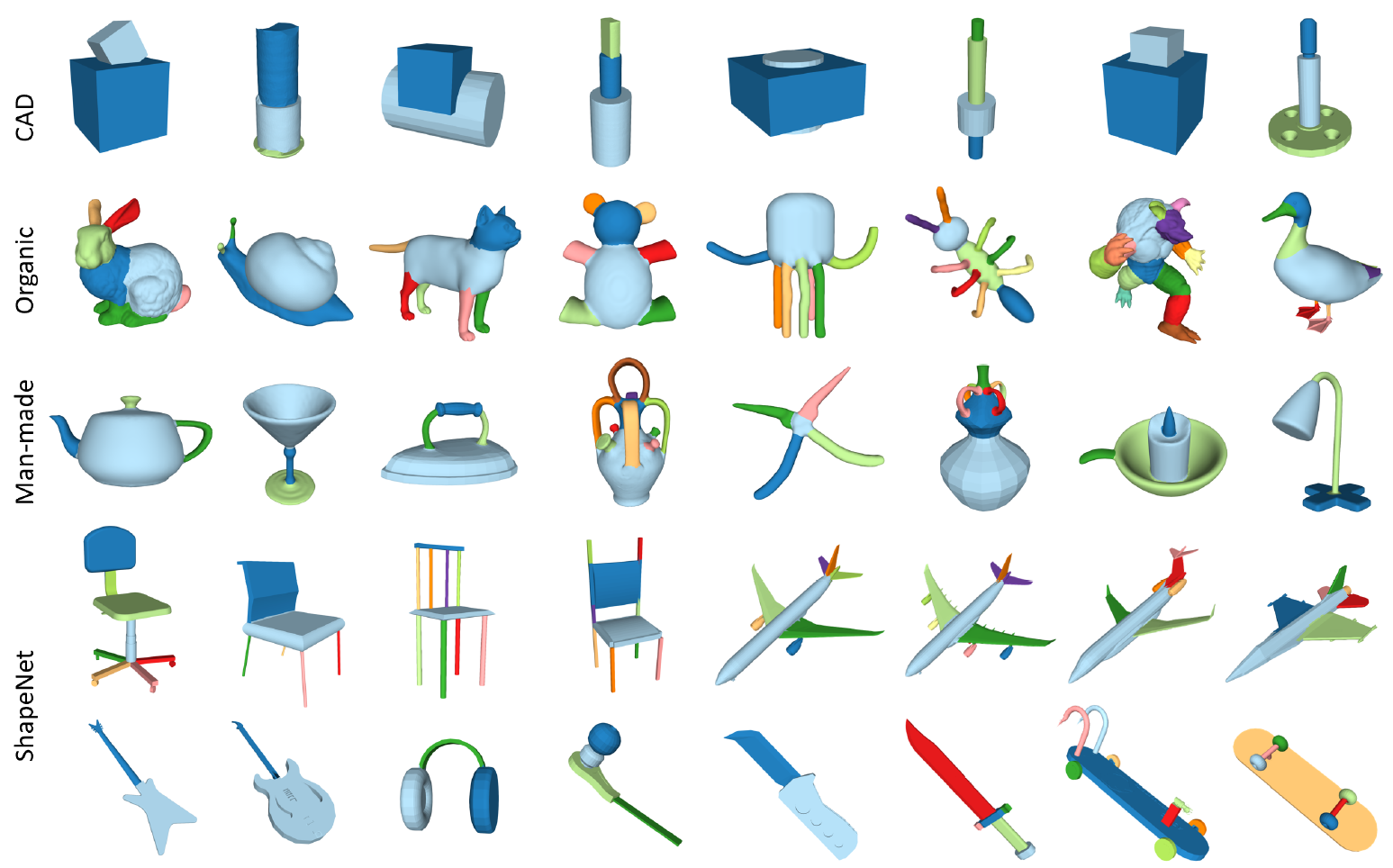 |
|||
| Fig. 2. Segmentation results of SEG-MAT for various shapes. We always use consistent parameter settings for different shapes and datasets; the number of parts of each shape is determined by the algorithm automatically. | |||
| Comparison | |||
| We compare qualitatively with some representative rule-based methods in Fig. 3. It can be observed SEG-MAT gives better segmentation results that are more consistent with human’s perception. | |||
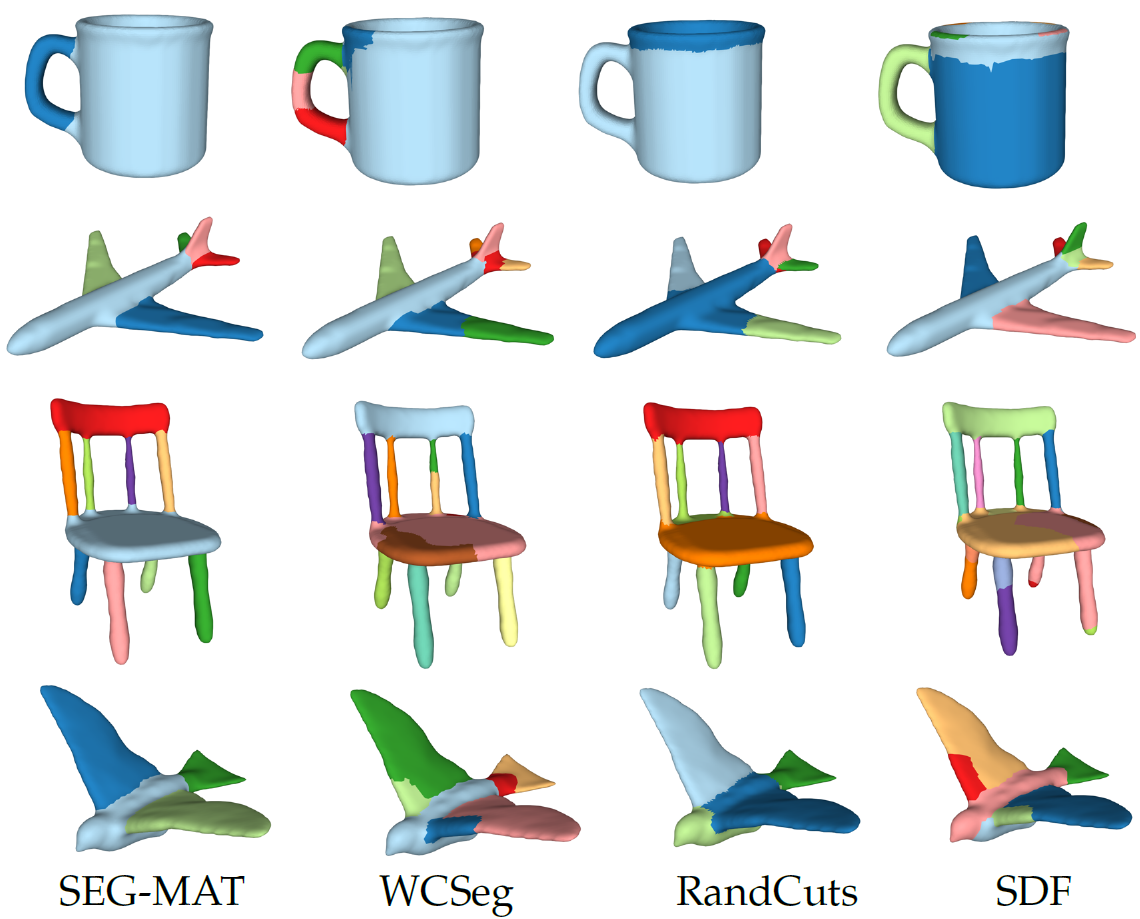 |
|||
| Fig. 3. Qualitative comparison with representative rule-based geometrical segmentation methods. | |||
| Structural Analysis | |||
| The unsupervised learning methods do not require manually annotated labels. The segmentation also relies on the intrinsic geometrical properties of a shape rather than predefined labels and the results follow the minima rule. Therefore, learning-based methods of this category have the same goal as our algorithm and can be included for comparison. Recently, Tulsiani et al. and Sun et al. propose unsupervised methods for structural analysis of 3D shapes. They learn to parse a 3D shape into a set of cuboid primitives and induce a segmentation by the projection of the predicted primitives onto the original shape. Fig. 4 shows qualitative comparison results with these methods, where our results are more structurally meaningful and able to capture more detailed components. | |||
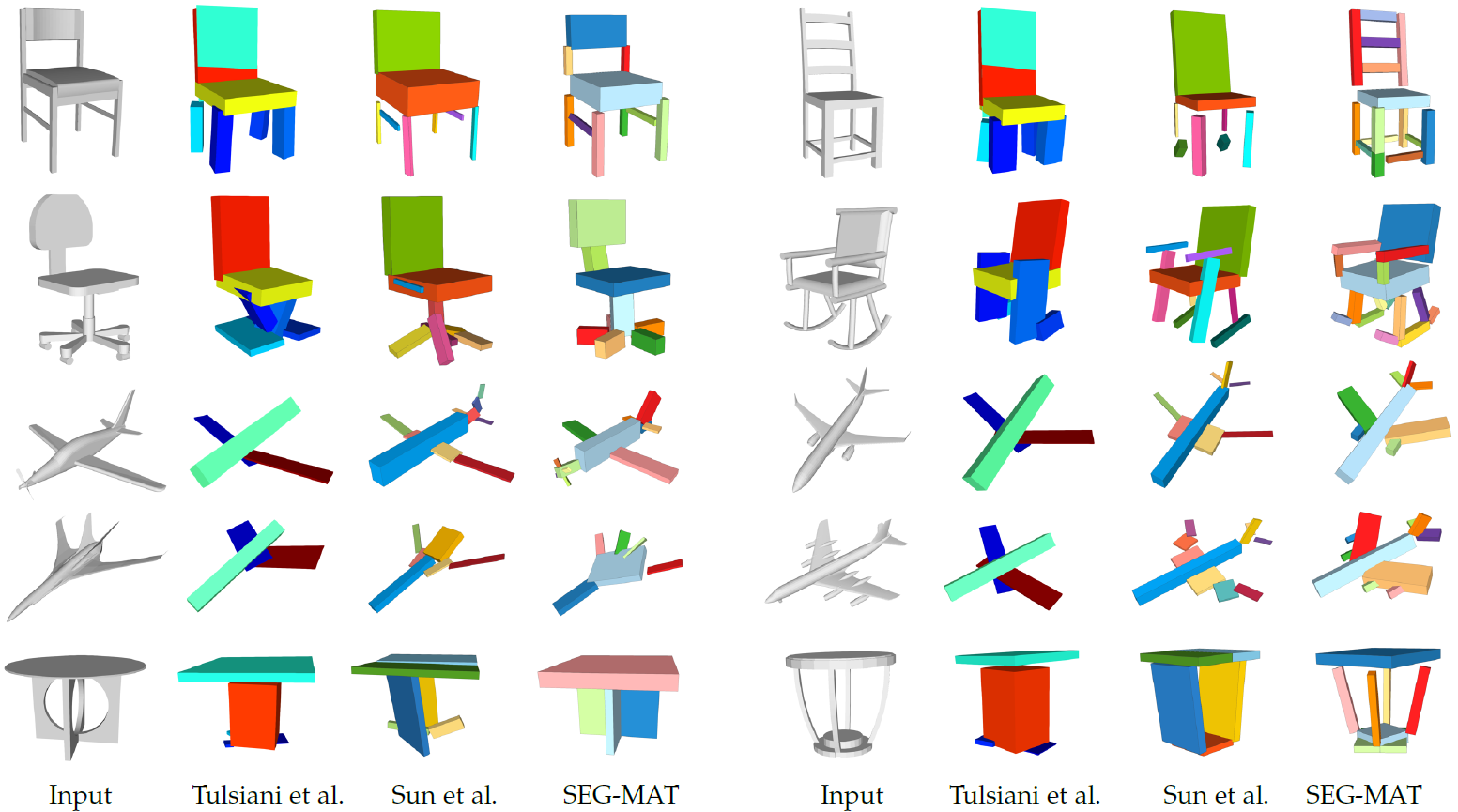 |
|||
| Fig. 4. Qualitative comparison with unsupervised learning methods for primitive-based approximation and part-based segmentation. | |||
| Robustness against noise | |||
| Although the MAT itself is very sensitive to boundary noise, our algorithm is resilient in the presence of significant noise. Fig. 5 shows an example of applying our algorithm to a model with increasing noise, with all the parameters being fixed. It can be observed that SEG-MAT produces almost consistent segmentation results at different noise levels. The robustness of SEG-MAT to surface noise is due to the use of the region growing technique and the swallowing process. Region growing is a greedy strategy, and hence we can generate stable regions by greedily finding similar neighbors rather than globally considering the insignificant branches. More importantly, the “swallowing” process merges the noisy branches into the stable regions, and thus the noisy branches will not be considered as valid parts. Therefore, the algorithm only focuses on the backbone of the MAT and is insensitive to noise. More results are shown in Fig. 6 for some shapes with significant noise. | |||
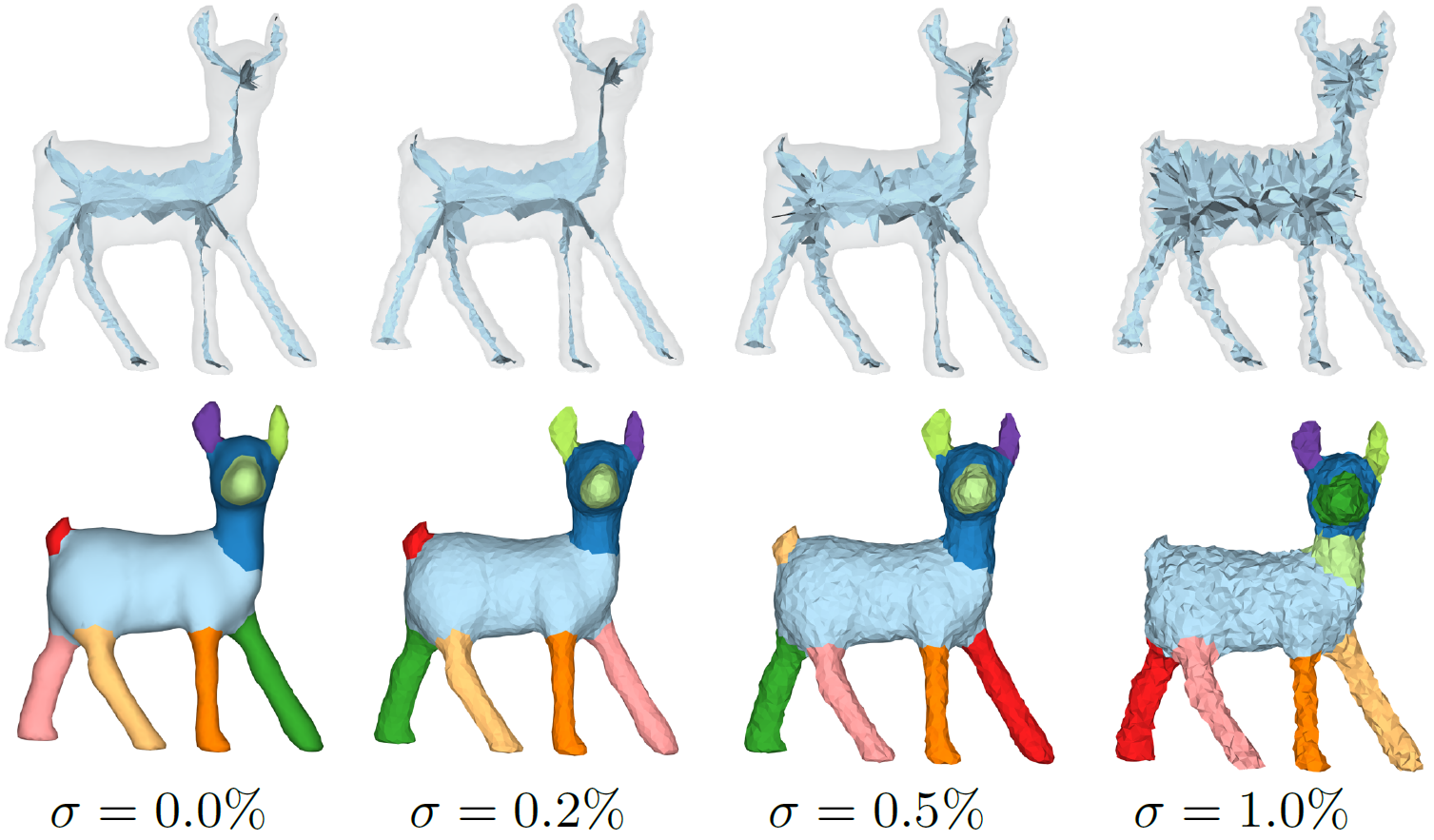 |
|||
| Fig. 5. Robustness of SEG-MAT against surface noise. The first row shows the medial meshes and the second row shows the corresponding segmentation results. We add to each mesh vertex a white Gaussian noise with the mean value equal to zero and the standard deviation sigma = 0:0%; 0:2%; 0:5%; 1:0% of the length of the diagonal of bounding box respectively. Using a same set of parameter values, SEG-MAT is able to produce almost consistent segmentation results. | |||
 |
|||
| Fig. 6. More segmentation results of shapes with significant noise, while SEG-MAT is still able to segment these shapes into meaningful parts. | |||
|
|
|||
| ©Changjian Li. Last update: October, 2020. |
